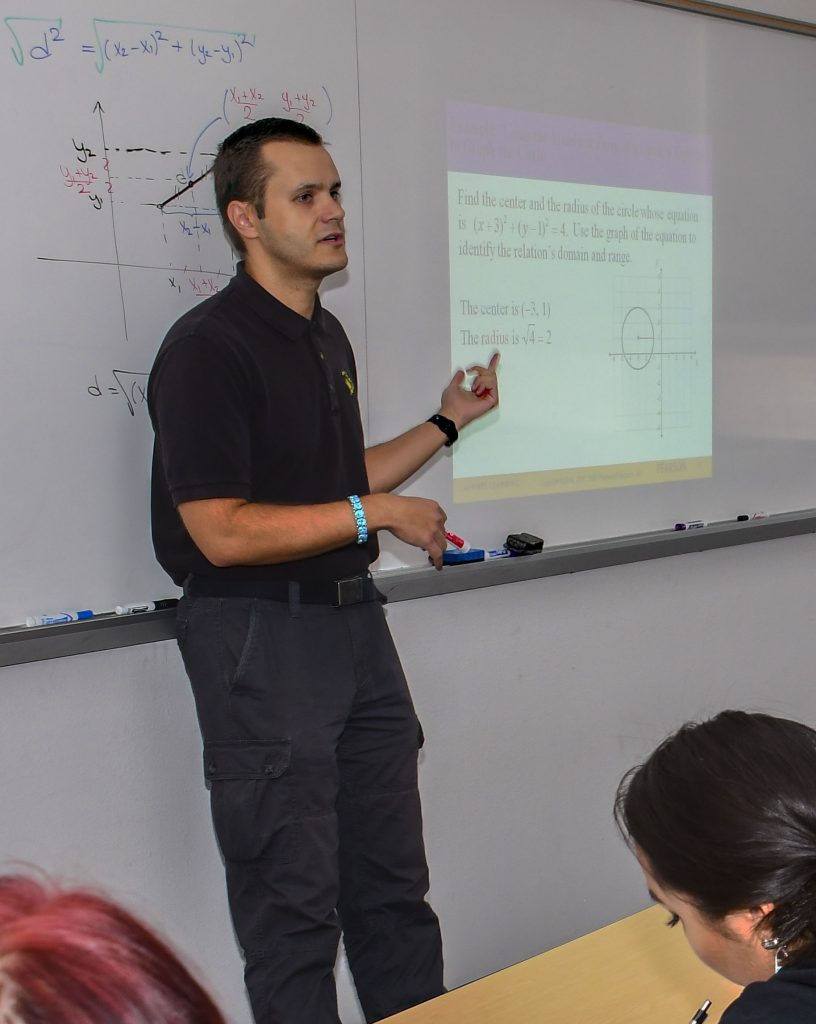
October 31, 2018
TSAILE, Ariz. — A newly published journal paper by a Diné College math professor focuses on improving the design of concentric ring electrodes — novel and non-invasive sensors that can be used for various kinds of electrophysiological measurement, i.e. recording electric signals from brain, heart, muscles, intestines, uterus, etc., for diagnostic purposes.
The paper, entitled “Solving the general inter-ring distances optimization problem for concentric ring electrodes to improve Laplacian estimation,” can be viewed via BioMedical Engineering OnLine, which is published by Springer Nature.
Epilepsy is the fourth most common neurological disorder and effects various people around the Navajo Nation.
“We have shown that by optimizing the parameters of the electrode itself, including, in this particular case, the distances between the rings, that it is possible to improve the quality of an obtained signal to allow better diagnosis,” Oleksandr Makeyev, Ph.D., a Ukraine-born professor who has taught at Diné College since 2014, said.
“This project is indirectly related to our other major research project aiming to improve epilepsy diagnosis via faster and more accurate seizure detection,” Makeyev said.
The seizure detection project is important to the Navajo Nation since, according to the Bethesda-Md.-based National Institute of Neurological Disorders and Stroke. The organization operates under the National Institutes of Health.
“The number of Native American patients seen for epilepsy per 1,000 persons indicates a high prevalence, more than double that for the United States as a whole,” an NINDS passage states.
Makeyev’s research comes via a $200,000 grant from the National Science Foundation that established an inter-disciplinary Mathematics for Engineering Applications (MEA) research laboratory at Diné College’s Tsaile campus back in 2016, helping involve Diné College STEM majors into cutting edge research in the two disciplines.
The grant, aiming to improve the accuracy of non-invasive seizure onset detection to help clinicians better diagnose epilepsy patients, has already resulted in several journal articles as well as multiple presentations at national and international conferences — with the potential to provide hope to epilepsy patients, including people living in high prevalence areas such as the Navajo Nation, Makeyev said.
The Multi-Functions of the MEA Lab
The MEA lab is not only providing valuable research experiences to paid undergraduate research assistants, but is adding a cutting edge research component and publication record for the School of STEM, but is also actively promoting STEM areas to prospective and current students, Makeyev noted.
For prospective students, the most notable activities take place during the annual STEM festival at Tsaile campus where the MEA lab members introduce visiting pupils from local schools to integrated circuits and sensors and use Snap Circuit kits to build sensors for light, water, etc., he said.
For current students, the MEA lab provides mathematics tutoring for a variety of courses including, for the first time, upper lever courses.
“All the majors are welcome to stop by the MEA lab, get help with their math coursework, and, if curious, learn about its research directions and processes at the same time,” Makeyev said.
A Second Research Grant in the Works
To help the MEA lab continue strengthening and enhancing the Diné College research infrastructure, another National Science Foundation grant is currently in the works for a research project related to further improving the design of concentric ring electrodes, Makeyev said.
“If successful, it could improve the diagnostic value of signals recorded using such optimized electrodes for other health conditions and disorders that affect the Native American population significantly more than other populations, such as, for example, diabetes,” Makeyev said.
“I’m glad to see a place like Diné College doing this kind of research,” Rena Yazzie, 68, of Red Valley, Ariz., said. “I have heard that a lot of Navajos have epilepsy so the research is good.”
CONTACT US
Marie R. Etsitty Nez
Vice President of External Affairs
marienez@dinecollege.edu
928-724-6985
George Joe, M.A., M.Ed, Director Of Marketing and Communications
grjoe@dinecollege.edu
928-724-6695
Bernie Dotson, Public Relations Officer
bdotson@dinecollege.edu
928-724-6697
